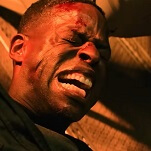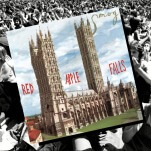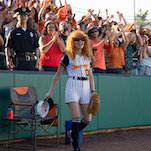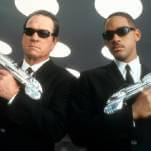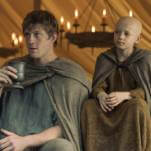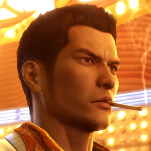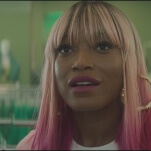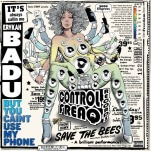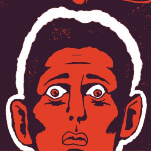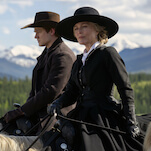Finally, a big event that doesn’t pit super friend against super friend
Comics, just as much as movies, have been under the thrall of summer blockbusters, translated into big event plotlines that can take over a publisher’s entire lineup. The last few years, many of these events have turned into Super Fights, with two famous heroes pitted against one another in stories that fall flat because the conflict is ramped up is too fast and often hand-waved away at the end of the event.
Bucking that trend, Scott Snyder and Greg Capullo are returning to Batman for a summer event that doesn’t pit friend against friend, but rather Batman against many iterations of himself. Over a year after the conclusion of their successful run on Batman under the New 52 arc, Snyder and Capullo are about to launch Dark Nights: Metal, but the prequel has already hit shelves. Dark Days: The Forge #1 (DC) is both the start of a new story and a family reunion of sorts, reintroducing readers who stick with tentpole titles like Batman to characters like Hawkman and Mister Terrific, not to mention nods to even less recognizable faces that have been absent from comics for too long. Duke Thomas, Hal Jordan, and Superman all get drawn in, and Mister Miracle makes a cameo that’s hard to see as anything other than a reminder to readers of the impending arrival of Mitch Gerads and Tom King’s book.
Typical of a Snyder book, The Forge is fast paced and riddled with revelations about the DC universe and Batman’s past that are difficult to discuss without spoilers. It feels very much like Batman And Robin: Eternal, which is no surprise given that Snyder collaborated on both titles with James Tynion IV, who is quickly becoming one of the most interesting writers on Bat-family books. Though all three of the artists involved are skilled, the fact that there are three of them becomes distracting fairly quickly. Many of DC’s digital first titles have employed multiple artists per issue, but each artist tackles a specific section of the book and the transition from one to another is used to signal flashbacks or a new venue or subplot. Here, Jim Lee, Andy Kubert, and John Romita Jr. switch off seemingly at random, transitioning to a new artist in the middle of a scene. It certainly doesn’t help that there were three individual inkers, though Scott Williams, Klaus Janson, and Danny Miki all do a fine job and colorists Alex Sinclair and Jeremiah Skipper do their best to make the book look cohesive.
Reading The Forge likely won’t be entirely necessary for fans who want to dive straight into Dark Nights: Metal, but it does help set up the cast of characters, and Lee’s contribution on the last few pages alone is excellent. It’s a relief to have a summer event that doesn’t sprawl to take over multiple titles and lose casual readers unwilling to commit to buying extra books, and Snyder and Capullo deliver consistent fun, fast rides with a lot of great Bat content.
[Caitlin Rosberg]
Magnus #1 shifts away from traditional superhero storytelling to become an especially engaging surprise
It’s only been three years since Dynamite Comics’ last update of Gold Key characters like Magnus, Turok, and Doctor Spektor, but the new Magnus series indicates that it’s not a bad idea to give these heroes another revamp. While the pre-established versions of these heroes are teaming up in The Sovereigns, the solo ongoing series are introducing new interpretations, starting with a new female Magnus who takes a very different approach to hunting robots. Written by Kyle Higgins with art by Jorge Fornés and colors by Chris O’Halloran, Magnus #1 (Dynamite) uses modern technology trends, specifically artificial intelligence and cloud-based storage, as the foundation for an intense sci-fi thriller.
In the year 2020, personal robot butlers have become the norm, and when they’re not working, these robots upload themselves to the cloud, where they are able to build lives separate from their work. Kerri Magnus used to track down robots that have abandoned their duties to stay in the cloud full-time, but she’s given up that occupation to become a robot therapist, venturing into the cloud to help these machines with the emotional issues that inevitably arise from sentience. This new version of Magnus is one that prioritizes empathy, and it’s a wise move from Higgins that differentiates this iteration from what came before while providing a strong emotional foundation for the character.
This first issue does excellent work establishing the concept and creating a compelling lead character, and Higgins mines a lot of tension from Magnus’ internal conflict to help robots while being one of the few people that can bring them to justice when they break the law. There’s a two-page infodump breaking down the history of this near-future setting, but it reads smoothly and comes after a chilling opening sequence that quickly grabs the reader’s attention by contrasting a robot’s idyllic life in the cloud with his dreary experience at work. The robot snaps and kills his employers, and Magnus is tasked with bringing him in, despite her reluctance to get back in the robot-hunting game.
The story for Magnus is intriguing, but the art is the major selling point of this series. Fornés’ thick inks and strong graphic compositions call to mind David Aja’s work on Hawkeye, and that book’s influence carries over to O’Halloran’s textured, understated coloring for the scenes set outside the cloud. There’s much more variation for the coloring inside the cloud, best exemplified by a striking two-page spread revealing a spectacular environment that use a wide spectrum of color to amplify the fantasy of a setting that blends modern urban architecture with Jack Kirby-style flourishes. This is an extremely versatile art team, and a one-page dream sequence has Fornés dramatically switching up his style to create a horrific, unsettling atmosphere with scratchy lines and splatters of ink, which O’Halloran colors with an intense contrast of deep red and blue. This is a book trying something smart and different with Magnus, Robot Fighter, and shifting away from traditional superhero storytelling makes it an especially engaging surprise.
[Oliver Sava]
My Lesbian Experience With Loneliness is an uncommonly fine example of both yuri and comics autobiography
It is easy to see why Nagata Kabi’s My Lesbian Experience With Loneliness (Seven Seas Entertainment) achieved viral success when it was originally published on Pixiv, an online art community not dissimilar from a Japanese DeviantArt. Drawn in a charming, bubbly style that is as inviting as it is evocative, and illuminated with complementary tones of pink and black, the “(true) story” of Nagata’s experience with an escort is pleasurable to look at and easy to read, and it effectively relates a Sapphic experience with uncommon complexity and depth. As Ana Valens wrote for The Mary Sue, “[My Lesbian Experience With Loneliness] challenges the traditional yuri fantasy because it sheds light on the complicated emotional and mental dynamics involved in lesbian relationships.” (Yuri being the Japanese genre of literature regarding same-sex relationships between women—sexual and/or romantic.)
Valens, however, as deferential to Nagata’s book as her essay is, over-simplifies My Lesbian Experience With Loneliness just as she praises it. Valens says “[yuri] can portray lesbian sexual relationships as something with its own traumas and flaws,” insisting that Nagata’s book evinces this, which it does to a degree, though not without complication. Valens herself touches upon this very complication in her description of the book: “[Nagata’s] story is an open, honest, and deeply personal look at her struggles to fight back against her eating disorder, stop self-harming, and learn more about her sexuality.”
This process of sexual self-discovery is not strictly a coming to terms with gay desire, and simplifying the book elides the way Nagata complicates her sexuality and gender identity throughout—the most compelling quality of the book—and it’s not even clear whether it’s accurate to say that Nagata’s story is one of lesbianism (at least, as it’s understood in the United States—which raises innumerable questions about the affect of translation). The title itself betrays this fact: it is, after all, it’s a (lesbian) experience with loneliness and not a (lonely) experience with lesbianism. That’s not to erase the homosexual components; rather, it’s simply to tease out Nagata’s own complicating of it. For example, Nagata—only ever drawn in androgynous clothing—says: “I didn’t want to accept that I was a woman. It wasn’t that I wanted to be a man; it was more like I hated belonging to a gender at all.” And in that very sequence, Nagata posits that her resistance to sex is the result of an auto-infantilization, and her desire to be with an older woman is a displacement of her attachment to her mother. Even by book’s end, her sexual experience is understood not as a sexual awakening or an articulation of her desire, but as a mild resolution to her self-loathing and a salve for her self-alienation. The book leaves readers with more questions than it answers regarding how Nagata identifies or understands herself.
Nagata goes further in queering her desire than even her laudatory critics have claimed, which is ultimately what makes the book so compelling. Its protracted ending and prosaic exposition leaves more than a little to be desired, but there’s a complicated play of gender and sexual identities that Nagata unbinds and sorts through with striking aesthetic aplomb—making My Lesbian Experience With Loneliness an uncommonly fine example of both yuri and autobiography.
[Shea Hennum]






